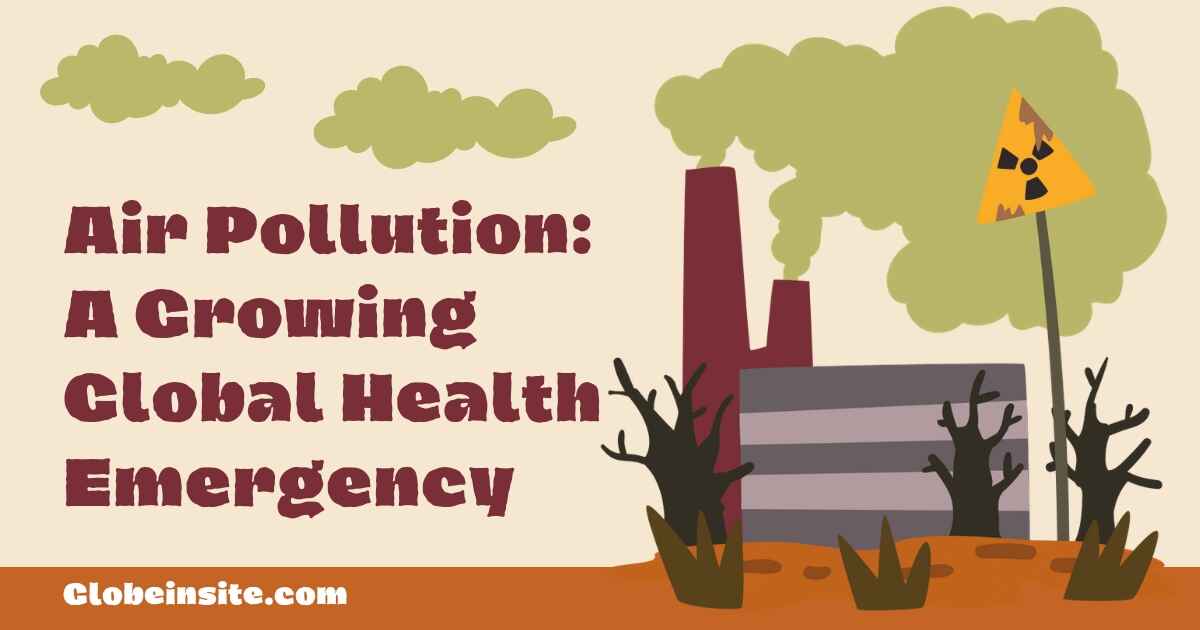Find the staggering economic and human losses caused via air pollution, from healthcare expenses to decreased productivity and environmental damage.
Presentation
The Undetectable Danger
Air pollution resembles a concealed foe, quietly invading our lungs and bodies consistently. It’s not only the brown haze you see looming over a city; the tiny particles and unsafe gases are frequently undetectable yet similarly risky.
Why Air Pollution Matters
You may ask, “For what reason would it be advisable for me I care about air pollution?” Indeed, the air we inhale is key to our endurance. Unfortunate air quality doesn’t noble motivation distress; it prompts extreme medical problems, economic costs, and environmental damage. Understanding this danger is the most vital move toward tending to it.
Understanding Air Pollution
Definition and Types
Air pollution alludes to the presence of unsafe substances in the air. These substances can be as gases, fluids, or solids and are sorted into two main types:
Primary Pollutants: These are straightforwardly radiated from sources, for example, carbon monoxide from vehicle depletes.
Secondary Pollutants: These structure in the air through compound responses, similar to ground-level ozone coming about because of the response of daylight with pollutants.
Sources of Air Pollution
Air pollution comes from both natural and human-made sources.
Natural Sources: These incorporate fierce blazes, volcanic emissions, and residue storms. While natural, they can in any case altogether influence air quality.
Human-Made Sources: These are the primary supporters of air pollution and incorporate modern outflows, vehicle exhaust, and compound solvents.
Wellbeing Impacts of Air Pollution
Short-Term Effects
In the short term, openness to dirtied air can cause respiratory issues like hacking, throat bothering, and shortness of breath. It’s similar to feeling like you have an unending cold that simply will not disappear.
Long-Term Effects
Long-term openness is where the serious damage happens. Ongoing respiratory illnesses, coronary illness, cellular breakdown in the lungs, and even brain issues are connected to prolonged openness to dirtied air. Envision living with a sluggish acting toxin that slowly decays your wellbeing throughout the long term.
Human Cost of Air Pollution
Air pollution is liable for a great many unexpected losses every year. The World Health Organization (WHO) gauges that air pollution causes around 7 million deaths yearly. These unexpected losses bring about profound and social costs as well as in significant economic losses because of the loss of productivity and the weight on healthcare frameworks.
Environmental Impacts of Air Pollution
Impact on Climate Change
Air pollution doesn’t simply remain in the air; it contributes altogether to climate change. Pollutants like carbon dioxide and methane are ozone harming substances that trap heat in the air, prompting an unnatural weather change. It resembles folding a sweeping over the Earth and turning up the intensity.
Damage to Environments
Pollutants can settle onto soil and water bodies, influencing plants and creatures. Corrosive rain, caused by sulfur dioxide and nitrogen oxides in the air, can damage forests, hurt oceanic life, and debase soil quality, upsetting the fragile equilibrium of environments.
Economic Results
Healthcare Costs
The wellbeing impacts of air pollution convert into huge healthcare costs. Treating illnesses caused by dirtied air is costly and loads healthcare frameworks around the world. Envision billions of dollars spent yearly to manage the aftermath from unfortunate air quality.
Lost Productivity
When people are sick, they can’t work. This prompts lost productivity and economic loss. Organizations endure, economies delayed down, and the expanding influence is felt worldwide. It’s like attempting to run a long distance race with a weighty knapsack — progress is slow and painful.
Influence on Specific Areas
Agriculture
Air pollution influences crop yields and livestock wellbeing, prompting decreased rural productivity. Ozone, specifically, is adverse to crops, causing billions of dollars in losses every year. In India, air pollution has been accounted for to lessen wheat yields by 36% in certain areas.
Tourism
Locales vigorously impacted via air pollution see a decrease in tourism. Tourists are less likely to visit areas where air quality is poor, prompting lost income for nearby economies. For example, the infamous smog in cities like Beijing has deterred potential tourists, impacting local businesses and hospitality industries.
Conclusion
Air pollution is a worldwide wellbeing crisis that influences everybody. From quick respiratory issues to long-term ongoing illnesses, the wellbeing impacts are extreme. The environmental damage further fuels climate change, upsets biological systems, and causes huge economic costs through healthcare costs and lost productivity. Tending to air pollution requires aggregate activity from states, ventures, and people to lessen outflows, execute stricter guidelines, and advance cleaner technologies. Our wellbeing and the planet’s future rely upon our endeavors to battle this undetectable danger.






